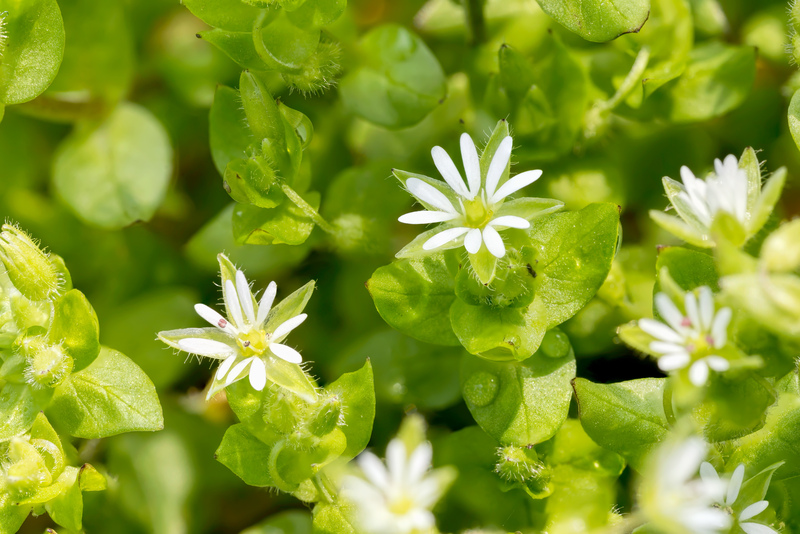Turning a Neglected Garden into a Flourishing Retreat
Posted on 25/06/2025
Turning a Neglected Garden into a Flourishing Retreat: A Step-by-Step Guide
Transforming a neglected garden into a vibrant and flourishing retreat is a rewarding journey that reaps aesthetic, environmental, and mental health benefits. Whether you have inherited an overgrown backyard or your garden has suffered from years of neglect, it's never too late to breathe new life into your outdoor space. In this comprehensive guide, we'll walk you through the process of revitalizing your garden, from reclaiming tangled beds to creating an inviting sanctuary where you can relax and enjoy nature's beauty.

Why Restore a Neglected Garden?
- Boost Property Value: A flourishing retreat enhances curb appeal and market value.
- Support Biodiversity: Welcoming native plants attracts pollinators and other beneficial wildlife.
- Personal Enjoyment: A rejuvenated garden becomes a peaceful haven for reflection and recreation.
- Environmental Impact: Healthy soil and sustainable practices can positively impact local ecosystems.
Restoring an abandoned garden restores not just beauty, but also provides a sustainable environment for plants, animals, and people alike.
Assessing Your Overgrown Garden: The First Step
Before you can transform your neglected garden into a haven, understanding its current state is crucial. Take a stroll around your outdoor space with a notepad, making observations about existing plants, weeds, trees, and hardscaping features.
Key Assessment Points
- Soil quality: Check for compaction, drainage issues, and signs of erosion.
- Existing plants: Identify any mature trees, shrubs, or perennials worth preserving.
- Light exposure: Note which areas receive sun, shade, or partial light.
- Structural elements: Fences, paths, sheds, or patios--assess their condition.
- Wildlife presence: Observe areas frequented by birds, insects, or small mammals.
Document your findings and sketch a simple map. This reference will guide your planning and help prioritize tasks.
Planning Your Garden Transformation
Successful garden restoration starts with a clear plan. Consider your ultimate vision: Are you aiming for an English cottage garden, a modern minimalist retreat, or a wildlife-friendly haven?
Establish Your Priorities
- Define primary functions (entertaining, relaxation, children's play, vegetable growing)
- Set a realistic budget for plants, tools, and materials
- Consider maintenance preferences: low-maintenance vs. intensive gardening
Design Basics for a Flourishing Garden Retreat
Draft a design that incorporates:
- Zones, such as seating, dining, and planting areas
- Pathways to guide exploration and movement
- Screening elements for privacy, such as hedges or trellises
- Water features for visual appeal and wildlife
- Focal points, like statues or vibrant flower beds
Balancing structure with informality often yields the most inviting garden retreats.
Clearing the Land: Reclaiming Overgrown Spaces
Cleaning up a neglected plot is the most physically demanding part of your garden makeover. Tackling it systematically prevents burnout and preserves any valuable plants or features.
Step-by-Step Clearance Strategy
- Remove Large Debris: Gather fallen branches, trash, and old garden ornaments for disposal or recycling.
- Tame Overgrown Grass and Weeds: Mow tall grass and use a hoe or spade to uproot weeds. Be cautious around desirable plants.
- Prune Trees and Shrubs: Cut back deadwood and shape unruly limbs with sterilized tools.
- Eliminate Invasive Plants: Identify and remove species that aggressively crowd out other vegetation. Wear gloves and dispose of them responsibly.
- Assess Soil Condition: Remove visible rocks and amend with organic matter as needed.
Using a slow, methodical approach protects your back and preserves any hidden treasures beneath the tangle.
Reviving Soil Health
A flourishing retreat begins with healthy soil. Years of neglect may leave your garden bed compacted, depleted, or imbalanced.
Improving Soil Step by Step
- Test your soil (kits are available at garden centers or online) to determine pH, drainage, and fertility.
- Add organic matter such as compost, aged manure, and leaf mold to improve structure and nutrition.
- Mulch liberally around plants to retain moisture, control weeds, and replenish nutrients naturally.
- Avoid excessive tilling, which can disrupt soil life and worsen compaction. Instead, use broadforks or no-dig techniques if possible.
Healthy soil is the backbone of any vibrant garden transformation and supports lush growth all season long.
Choosing the Right Plants: Building Biodiversity and Beauty
One of the joys of turning a neglected garden into an oasis is selecting new plants that reflect your style and suit your site. Diversifying your palette also benefits wildlife and enhances year-round interest.
Tips for Stellar Plant Selection
- Native plants: Choose species adapted to your local climate and soil for easy care and habitat value.
- Layering: Combine trees, shrubs, perennials, and groundcovers for a naturalistic, resilient effect.
- Seasonal succession: Plan for a continuous display of color from spring bulbs to autumn foliage and winter berries.
- Edibles: Incorporate culinary herbs, vegetables, or fruit trees for a productive and beautiful retreat.
- Pollinator favorites: Include plants like lavender, salvia, and echinacea to support bees and butterflies.
Consult local garden centers or native plant societies for expert advice and avoid invasive species.
Designing Tranquil Spaces for Relaxation
A true retreat invites you to slow down and savor the outdoors. Thoughtful design choices--such as creating cozy nooks, shaded corners, or inviting patios--help turn your garden into an everyday getaway.
Ideas to Elevate Your Garden Escape
- Install comfortable seating: Consider benches, Adirondack chairs, or hammocks.
- Integrate natural materials: Use stone, wood, or gravel for paths and patios to blend with the landscape.
- Add shade structures: Pergolas, arbors, and shade sails can block summer sun and frame views.
- Bring in water features: Fountains, small ponds, or birdbaths enrich the atmosphere with soothing sounds and wildlife attraction.
- Install subtle lighting: Solar-powered lanterns or string lights extend your enjoyment into the evening.
These simple touches cultivate a sense of sanctuary and invite you to spend more time outdoors.
Sustainable Practices for a Low-Maintenance, Thriving Garden
Sustainability is at the heart of a truly flourishing garden revival. Implementing eco-friendly strategies not only reduces maintenance but also ensures long-lasting success.
Practical Sustainability Tips
- Harvest rainwater in barrels to irrigate your plants naturally and efficiently.
- Compost kitchen waste and garden clippings to enrich your soil and minimize landfill contributions.
- Choose drought-tolerant plants for difficult borders or climate resilience.
- Practice organic gardening: Avoid chemical pesticides and fertilizers in favor of natural alternatives.
- Encourage wildlife: Hang bird feeders, bat houses, or insect hotels to support a balanced ecosystem.
Using sustainable methods keeps your garden healthy, supports local wildlife, and reduces your carbon footprint.
Maintaining Your Rejuvenated Oasis
With your neglected garden now a thriving retreat, ongoing maintenance is essential to preserve its beauty. Developing a routine ensures your plants remain healthy and weeds don't regain ground.
Essential Maintenance Tasks
- Mulch annually to suppress weeds and enrich the soil
- Water wisely: Focus on deep, infrequent watering to promote root growth
- Weed regularly, especially after rain or new plantings
- Prune shrubs and trees to maintain form and encourage flowering
- Fertilize with compost or organic amendments as needed
- Inspect for pests and disease, intervening with eco-friendly controls if necessary
Consistent care rewards you with an abundant, resilient garden all year round.

Before and After: Real-Life Garden Transformation Inspiration
Many gardeners have faced the challenge of reviving a neglected garden and succeeded in creating beautiful retreats. Here's a brief case study:
Case Study: From Weeds to Wonderland
Megan inherited a backyard filled with brambles, broken fencing, and compacted soil. She started by methodically clearing debris and saving a few mature roses. Adding loads of compost revived the soil. Inspired by cottage garden designs, she planted a mixture of perennials, bulbs, and edible crops. A winding stone path, a wooden bench under a new cherry tree, and bird feeders completed the transformation. Within two years, Megan's garden flourished--becoming a sanctuary for pollinators and a beloved gathering spot for family and friends.
Conclusion: Enjoy the Rewards of a Revitalized Garden Retreat
Turning an abandoned green space into a lush, picturesque retreat may seem daunting, but with thoughtful planning and a step-by-step approach, any gardener can succeed. By focusing on improving soil, embracing biodiversity, and incorporating personal touches, you'll achieve a garden that not only delights the senses but also sustains wildlife and reduces maintenance burdens.
Remember, every thriving retreat begins with a single step. Whether you're nurturing a tiny courtyard or a sprawling backyard, the results will reward your patience and care for years to come.
Start today and watch your neglected garden blossom into a flourishing haven--a place where memories are made, and nature is celebrated.
Ready to embark on your garden transformation journey?
Embrace the process, celebrate small victories, and enjoy your new flourishing retreat!





